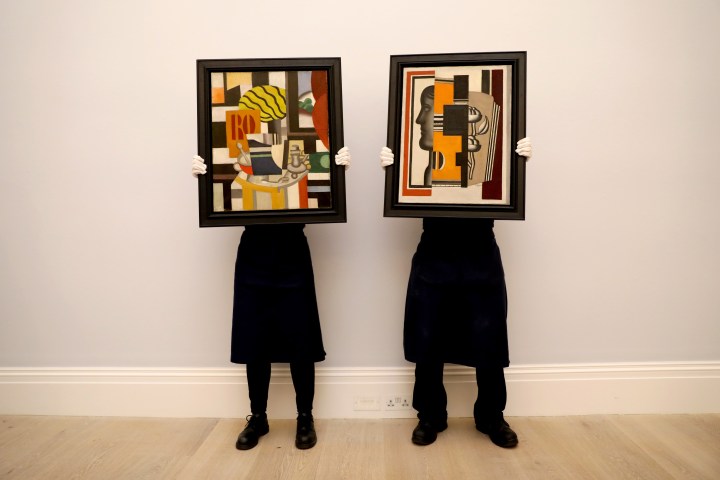
Does the sale of fine art need physical spaces?

The COVID-19 pandemic has changed how the art market functions, expediting a digital revolution. Galleries have ramped up online auctions, and many buyers have become more comfortable bidding for high-value works online. Despite the shift to online sales, the market saw a pause early in the pandemic, and gallery sales were down 36% in the first six months of the pandemic, according to a report from Art Basel and UBS.
“Marketplace” host Kai Ryssdal spoke with Masha Golovina, director of acquisitions at Masterworks.io, an art investment platform, about how the pandemic has impacted the art market. (Masterworks.io is a “Marketplace” underwriter.)
The following is an edited transcript of their conversation.
Kai Ryssdal: Well, so let’s talk about how the art market’s been doing lo these past 10 months into this thing. I mean, the recession’s come to a stop, it has slowly restarted, people are still a little leery about spending money. What are you seeing in your line of work?
Masha Golovina: So I think the art market is really interesting in that it doesn’t follow what you would think of as the typical progression in terms of the economics of it. And so we’ve seen really solid results for blue-chip artworks. I think that’s not too surprising, given that we do often speak about almost two economies within the greater U.S. economy or globally speaking, where stocks are at all-time highs, and meanwhile, unemployment is still, you know, surging over 6%. So, you know, in the art market, things really came to a standstill in March. And then private sales took the place of auction sales, and auction sales really didn’t pick up again until the end of June, beginning of July.
Ryssdal: Right. So let’s talk for a second, though, about the recovery. Because I wonder, you know, much has been made, and you alluded to it a minute ago, the, the differential nature of this recovery, right? People on the bottom are maybe not doing so great. And people in the upper echelons of the income spectrum are doing quite fine, thank you very much. And I wonder if you’re seeing the same kind of thing in the art market, right? I mean, I’m sure anybody who can afford a 100 million, $100 million painting can still afford a $100 million painting. But if I’m a small gallery owner or a lesser-known artist, it’s probably a more difficult time.
Golovina: We’ve seen smaller galleries struggle more than the mega-dealers. I’ll just use New York as an example. A number of collectors basically moving out to their homes in the Hamptons. And then once winter rolled around, more recently, you had people fly down to Palm Beach [in Florida] and Miami. And so what the mega-dealers were able to do was to open physical spaces in the Hamptons, in Palm Beach. And, you know, we’re seeing record prices in June. The first sales back for that blue-chip segment, we saw 19 records for 19 artists. And I think that’s very impressive, given that there’d just been no sales since March.
Ryssdal: Sure. Do, do we need a, you know, the big Art Basel Miamis and all the rest of it to make the art market go? Or can you do this now virtually? I mean, there’s a whole, big conversation about are we going back to the office? Are there going to be conventions? Are people going to travel for business?
Golovina: You don’t absolutely need, you know, physical art fairs for sales to happen. I think it is, it’s a really effective way to see a lot of artworks at once and really get a sense of how the market is doing and what kind of property is coming up for sale. When it’s coupled with online, that’s the ideal mix. But I do think that returning to art fairs in some capacity, once there’s a safe way to do so, is going to reenergize the market.
Ryssdal: Yeah, I mean, I get it. You’re gonna plop down a bunch of money for a painting or a piece of art, you want to see it in real life, right?
Golovina: Exactly.
There’s a lot happening in the world. Through it all, Marketplace is here for you.
You rely on Marketplace to break down the world’s events and tell you how it affects you in a fact-based, approachable way. We rely on your financial support to keep making that possible.
Your donation today powers the independent journalism that you rely on. For just $5/month, you can help sustain Marketplace so we can keep reporting on the things that matter to you.


















